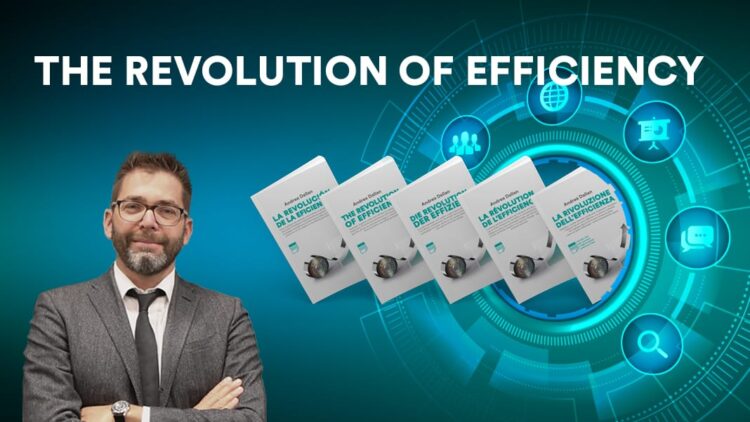The Revolution of Efficiency: Introduction

Drawn from the book “The Revolution of Efficiency” written by Andrea Dallan
Have you ever heard of the Pareto principle?
For those who don’t know him, Pareto was an Italian mathematician, economist and sociologist who lived from 1848 to 1923.
While studying the distribution of wealth, he observed that in Italy, at the time, less than 20% of the population owned 80% of the land.
The observation led to the well-known Pareto principle.
“When we observe a phenomenon, most of the effects are due to a limited number of causes.”
It’s also known as the 80/20 rule, is statistical and empirical in nature and can be seen in all areas, including business. For example:
- Less than twenty percent of products produce more than eighty percent of turnover;
- Less than twenty percent of customers produce more than eighty percent of sales, or margins;
- Less than twenty percent of countries attract more than eighty percent of a company’s sales.
My customers work in the sheet metal products sector and Dallan is the recognized specialist in thin sheet metal.
In particular, when we or a customer had a production-related problem, 80 percent of the time it was down to one of the following reasons:
- Efficiency – linked to the waste of raw materials and energy consumption, among others
- Productivity – starting production of a new product or increasing volumes
- Flexibility – due to the variability of demand and the decreasing size of batches
- Automation and Simplification – linked to problems concerning shortages of specialized technical staff and the amount of time spent handling products, which produces no added value
Efficiency is the essence of all of them: indeed, we define it as the relationship between the result obtained and the resources used to obtain it.
[Efficiency] = [Result obtained] / [Resources used to obtain it]
We use resources to obtain a result (whether it is turnover, margins or pieces produced) in every company and every business process.
The resources involved might be:
- Raw materials – including the cost of material in stock
- Energy – usually electricity and heat
- Time – linked to the principle of productivity and flexibility
- Labor – linked to the principle of automation, in terms of the number of employees and level of specialization.
Therefore, efficiency increases when the same results are obtained using:
- less raw material
- less energy
- less time (when we produce more efficiently)
- less labor (or when we need less skilled labor)
Efficiency also increases when we manage to obtain a better result using the same raw materials, energy, time and labor.
In both cases, we’re talking about making processes much more profitable and significantly improving company margins on the product produced: in order to achieve a true Revolution in Efficiency, you need entrepreneurs and managers capable of being pioneers and looking beyond conventional systems and processing cycles.
The motto of one of our companies states: “We develop solutions that create value for customers.”
I’ve always been convinced that the solutions we provide must be environmentally sustainable, while generating results and value at the same time.
Together with our customers, out in the field, we’ve seen that the right technologies always achieve great results: economic, organizational, in the quality of work and by consuming far less raw material and energy than traditional systems.
I had started writing this book to tell my children the story of how and why I chose my studies, my job and to tell the story of our companies. Many of my teachers appeared in the story, although I’m not talking about school teachers or university lecturers.
This book contains lots of practical uses of the various concepts and you’ll come across the stories of great industrialists: I think that an entrepreneur’s job is to continue learning and I’ve learned a lot from them.
The second part of the book shows how these concepts become extraordinary production machines, such as the Coil to Punch/Laser, Coil To Window, Coil To Pack and Coil to Box systems.
The third part of the book contains some of the tools I use to:
- Calculate the raw material savings obtained with a new system;
- Calculate the hourly cost of a system;
- Calculate the total production cost;
- Calculate the size and length of the coils to organize production;
- Calculate the payback of a system;
- Perform a Make or Buy analysis;
- Calculate the advantage of roll forming over bending;
- Calculate the advantage of coil-fed punching over sheet-fed punching and stamping;
- Advanced decision-making techniques.
The latter come from articles and studies that I’ve published over the years and are always some of the most popular pages on our website www.dallan.com and on my personal LinkedIn profile https://it.linkedin.com/in/andreadallan
Happy reading!
My new book “The Revolution of Efficiency” has been available on Amazon (www.amazon.com) since the end of the summer.
Take now your copy!
![]()
Buy The Revolution of Efficiency at Amazon!

Andrea Dallan
CEO – Dallan Spa
